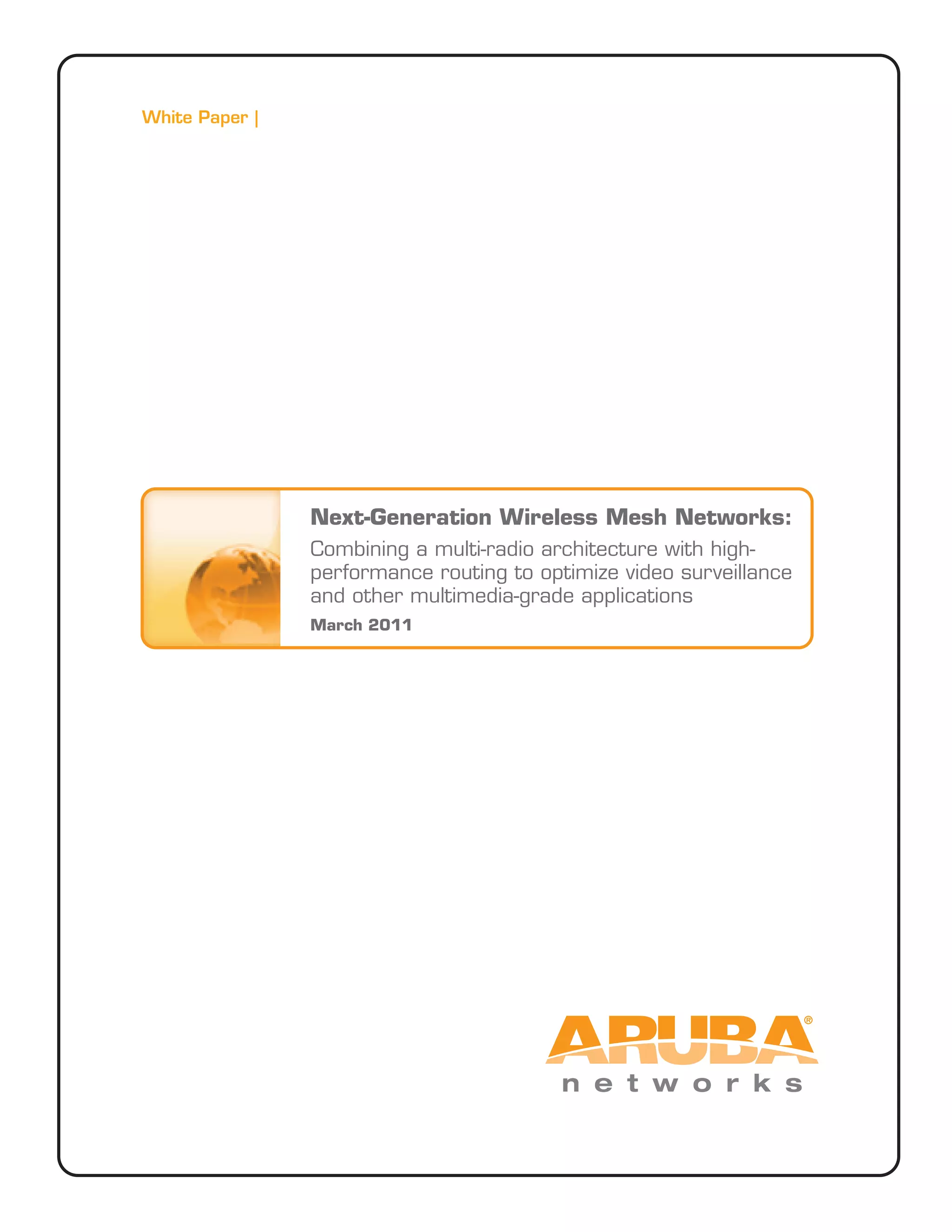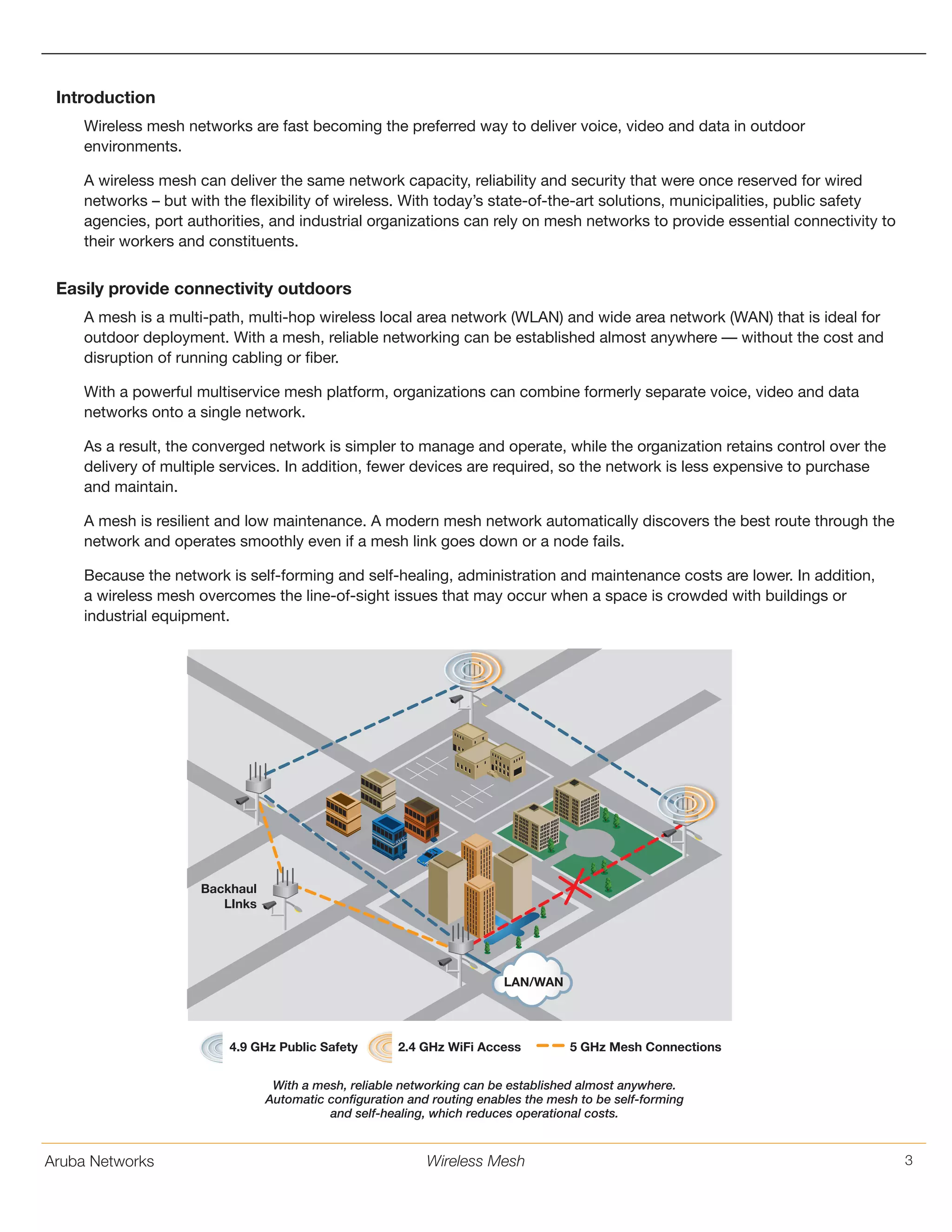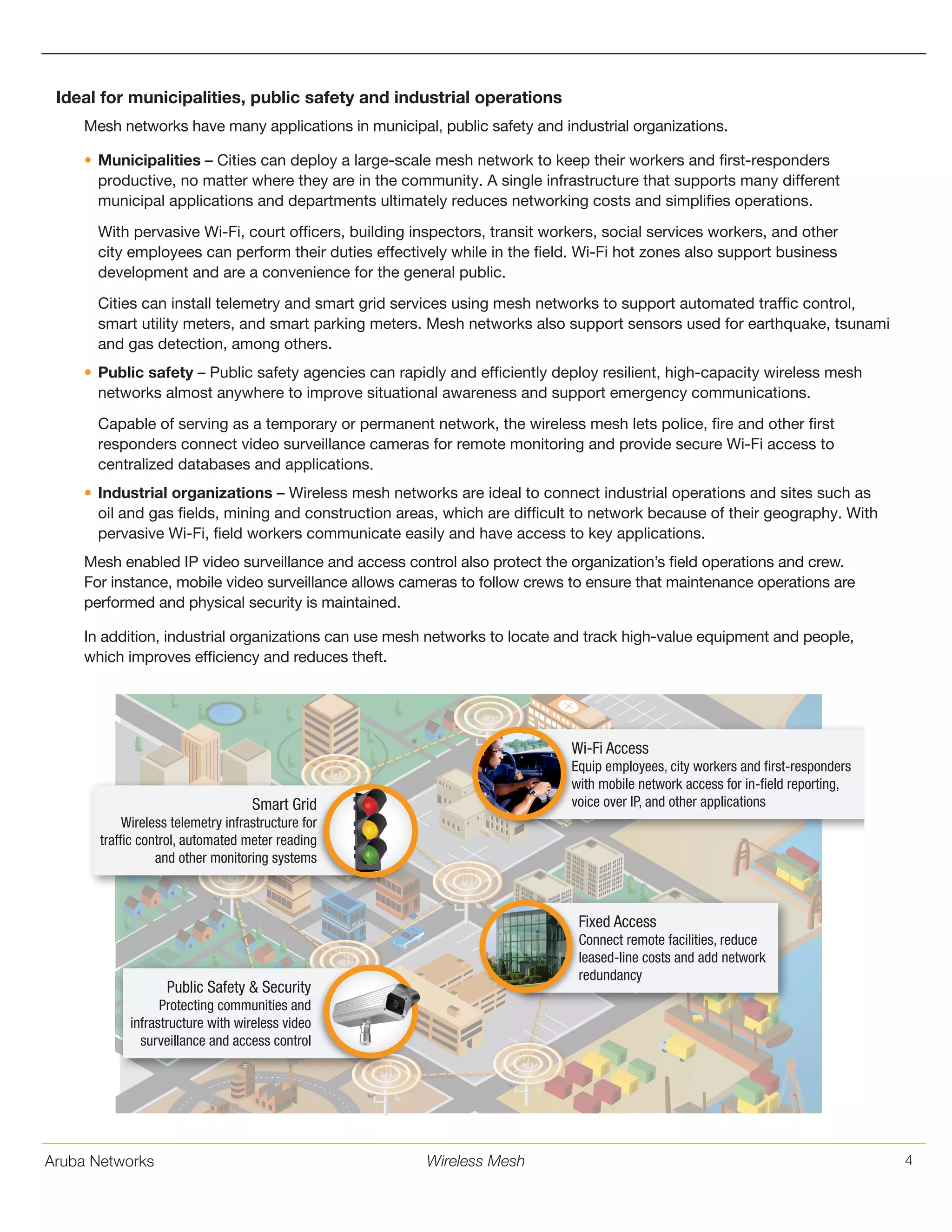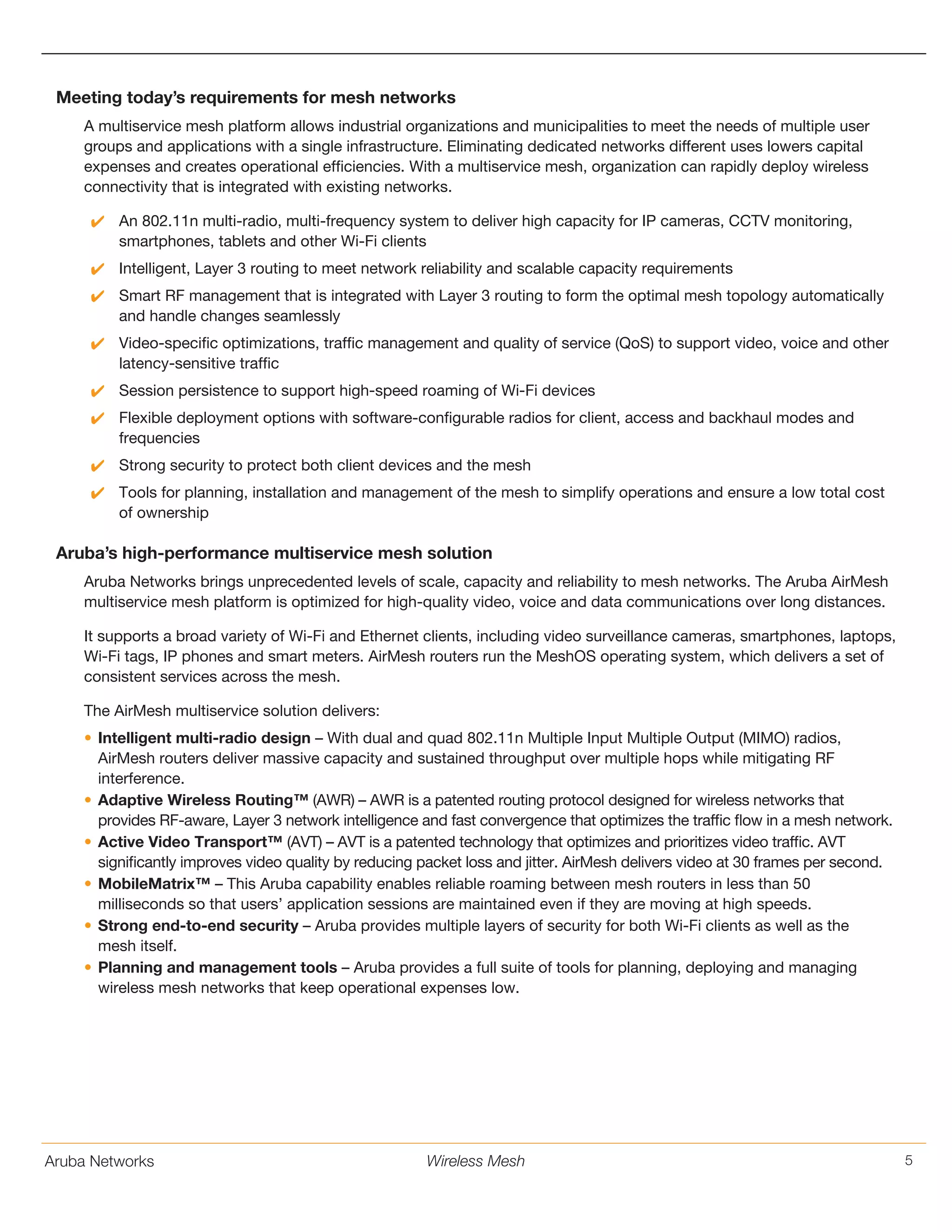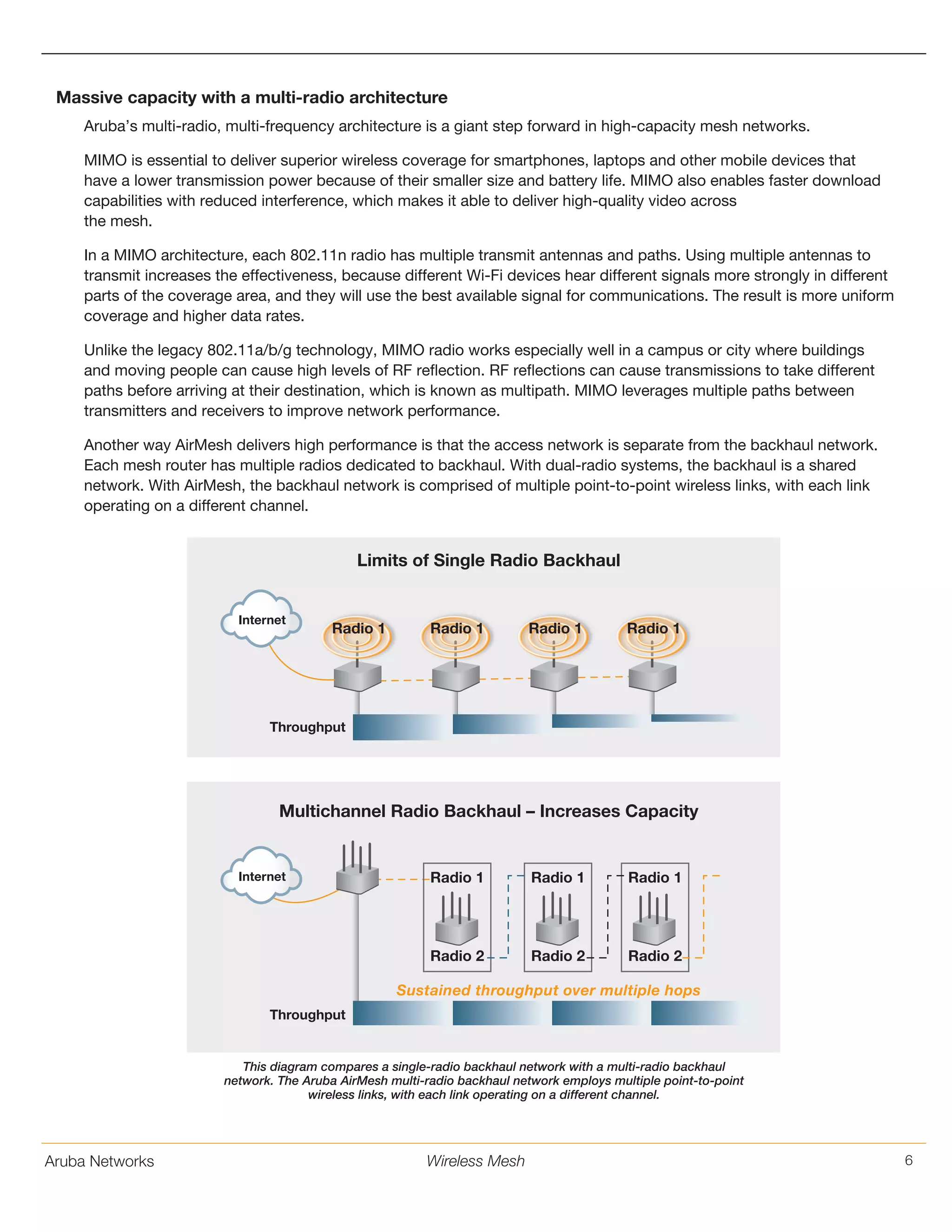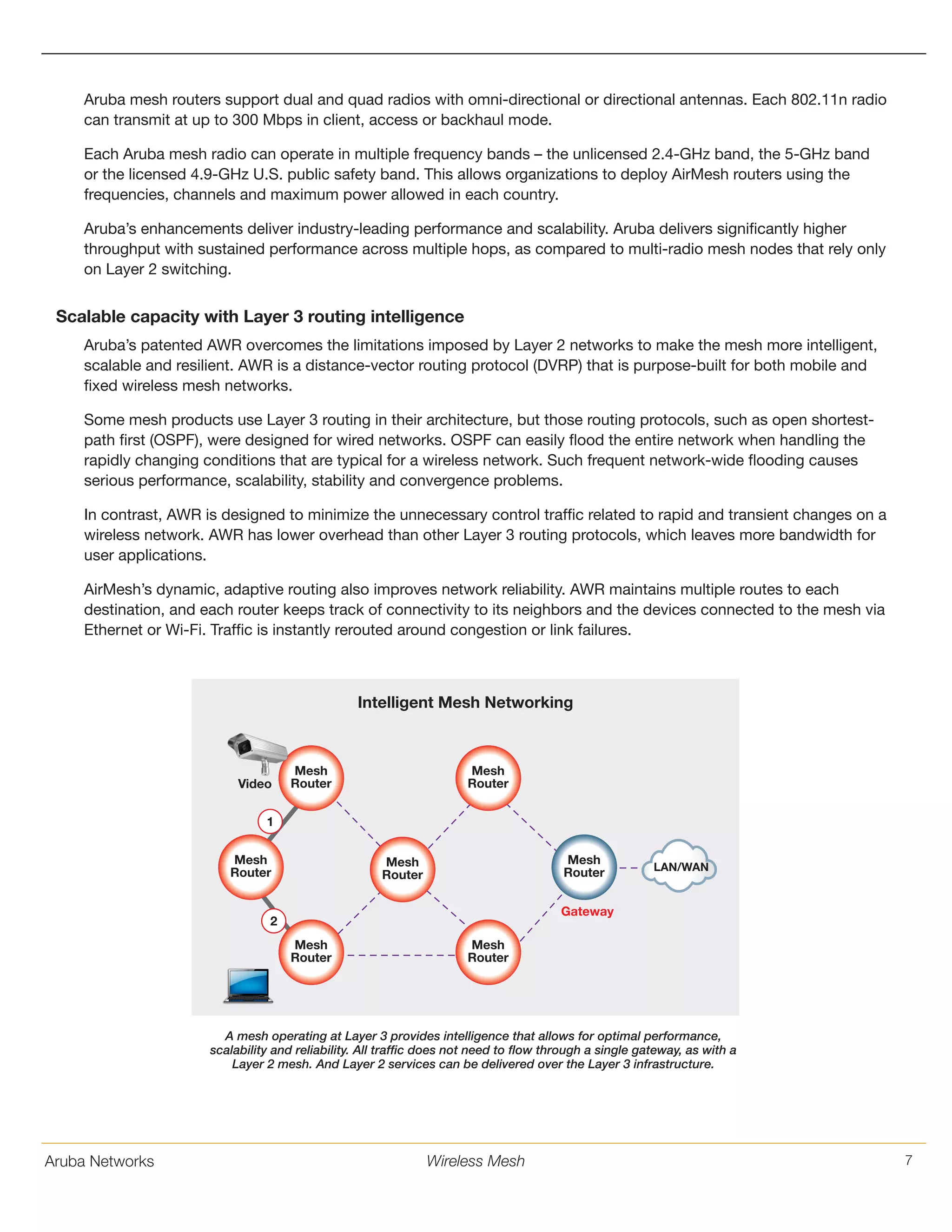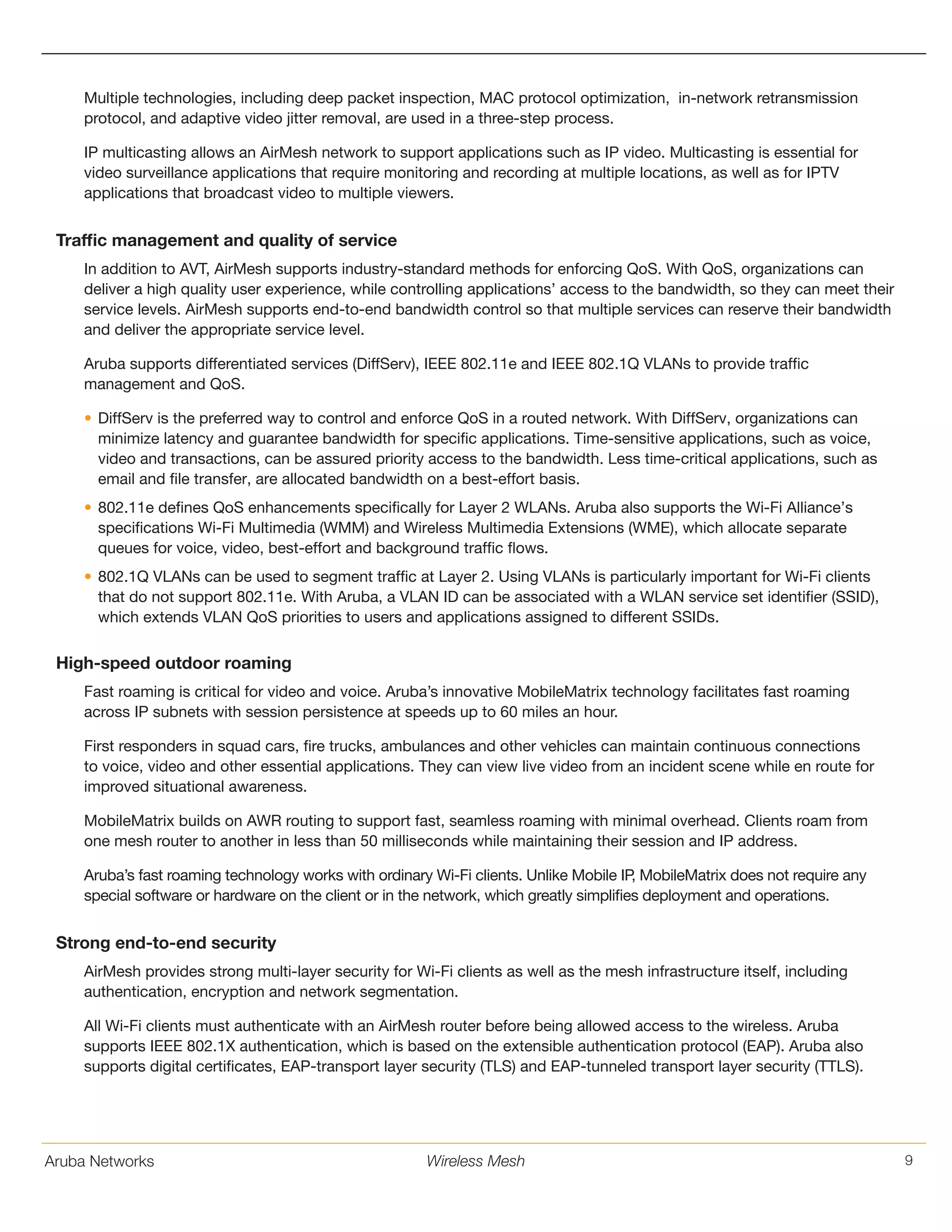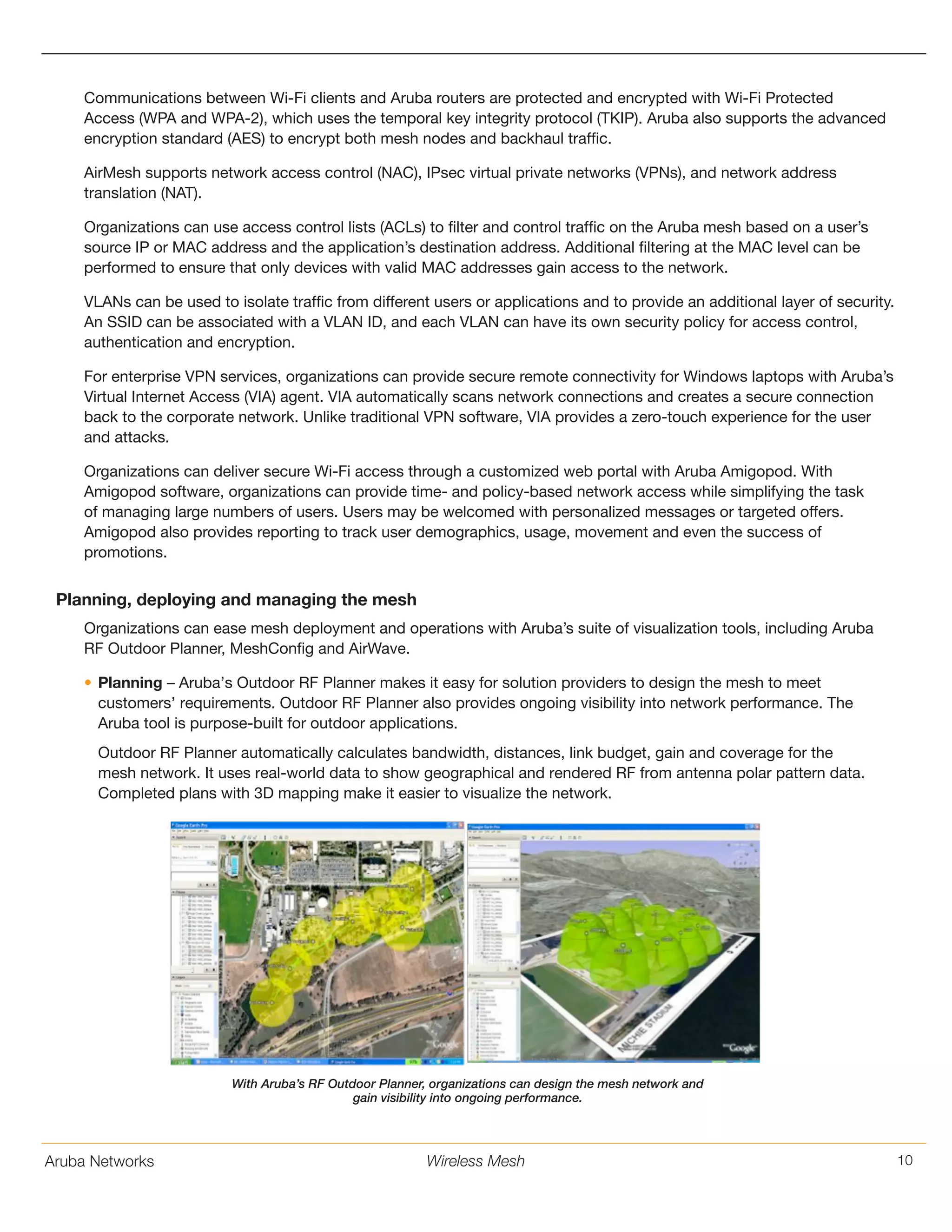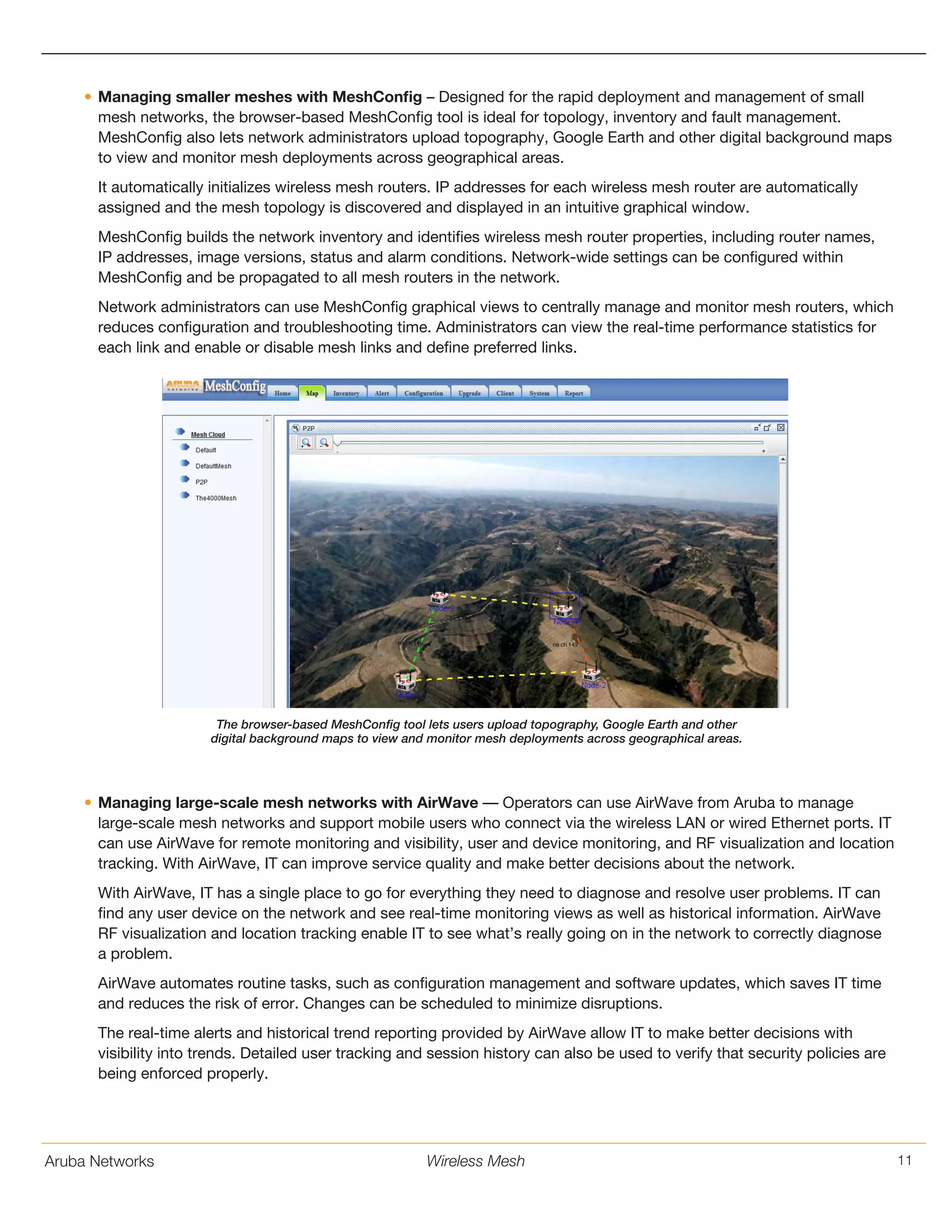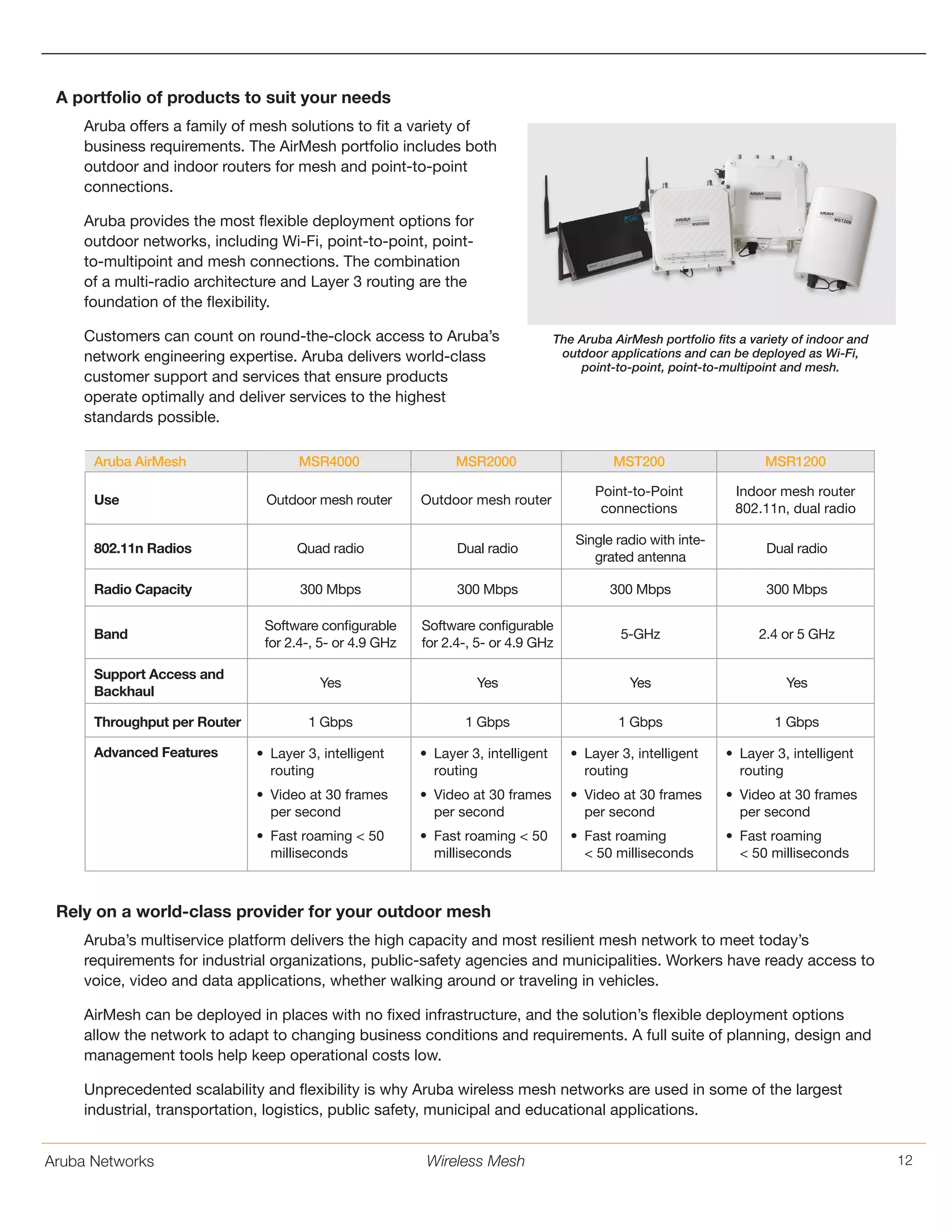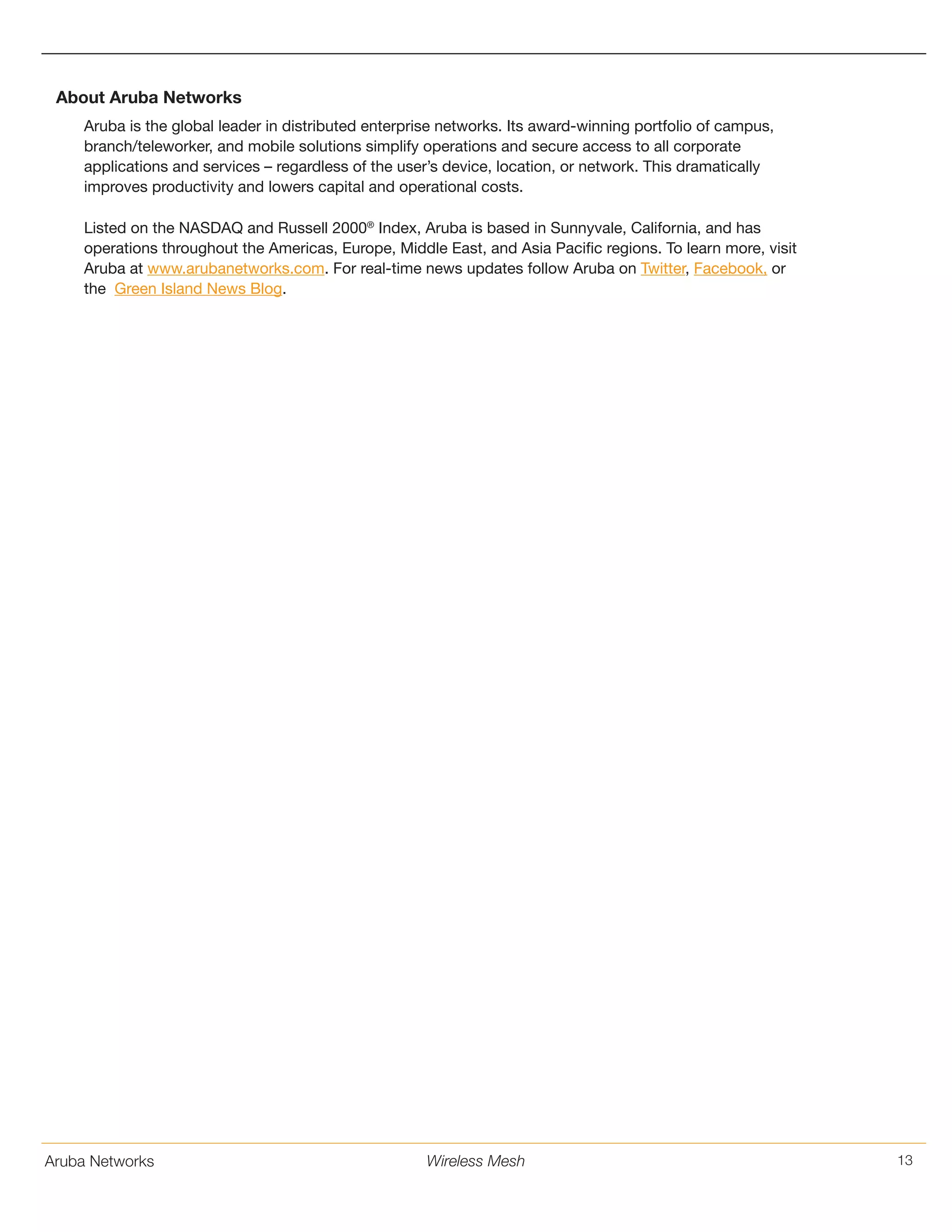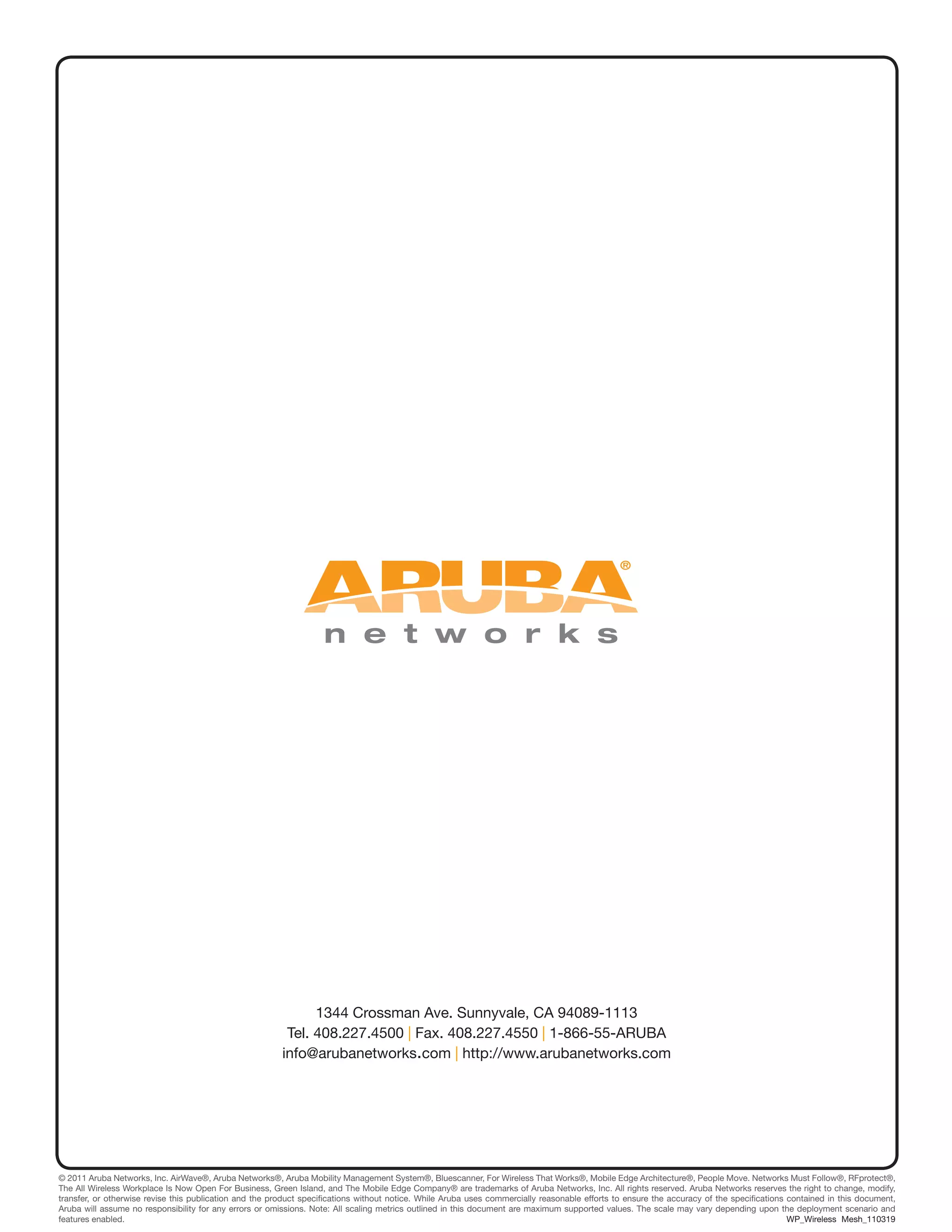Aruba's white paper discusses their next-generation wireless mesh network solution that combines a multi-radio architecture and high-performance routing to optimize applications like video surveillance. Key points:
1) Aruba's solution uses a multi-radio, multi-frequency system along with intelligent Layer 3 routing to deliver high capacity for services like video and allow optimal mesh topology.
2) It includes technologies like Active Video Transport and Adaptive Wireless Routing to prioritize and optimize video traffic routing across the mesh.
3) The multi-radio architecture provides massive capacity and sustained throughput over multiple hops while mitigating interference, allowing services like high-definition video streaming across the entire mesh network.
